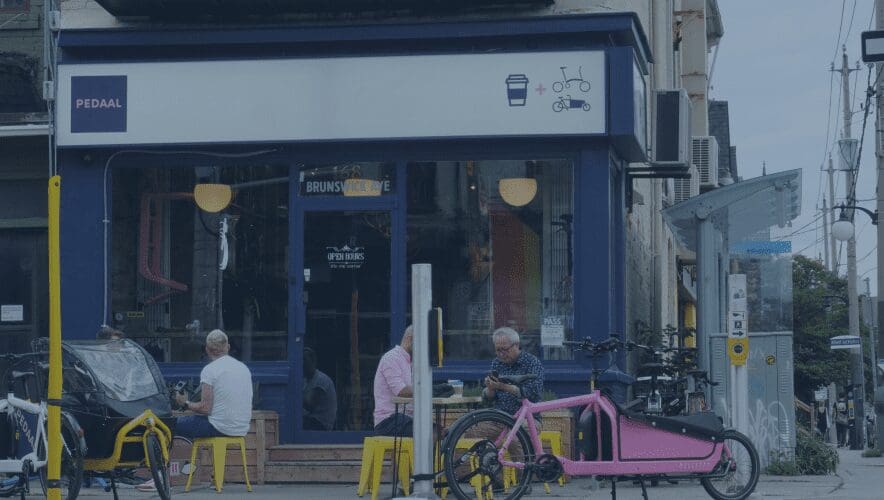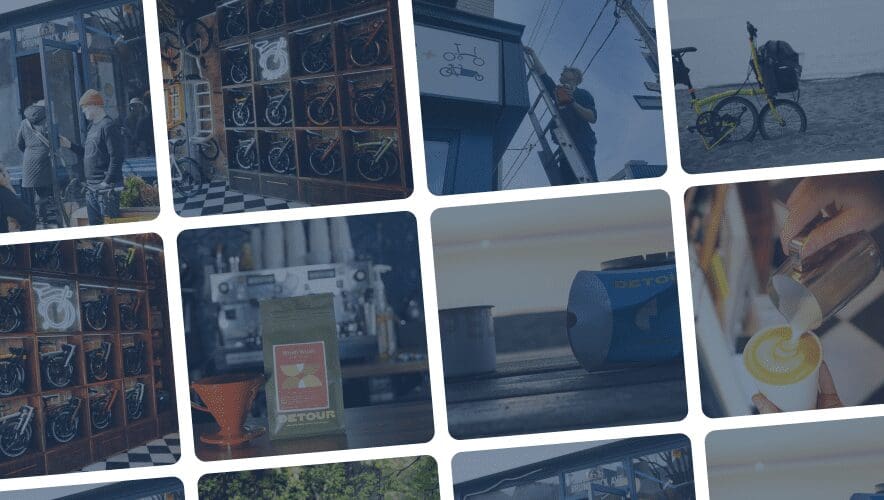One thing about folding bikes is that they evoke immediate curiosity… what is this bike with small wheels? What does it ride like? And, perhaps the most common question: how does it fold? Indeed, a folding bike produces questions because a folding bike is designed to answer a ton of questions! In fact, few other bikes can provide the same frictionless answer for the city cyclist, the recreational adventurer, or even the long-distance performance cyclist. What matters, of course, is that you get the right folding bike. Because the truth is that folding bikes are remarkable pieces of engineering. The best design will be engineered for your life – and may even expand your life too!
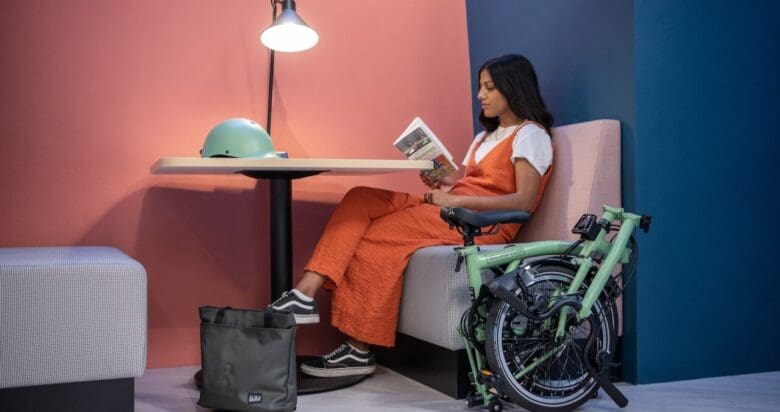
So, what is a folding bike used for? To answer this question we might want to ask who the folding bike was originally designed for and how the folding bike has evolved today. We’ve mentioned that a folding bike provides answers for the city cyclist, the recreational adventure and even the performance cyclist. What history shows is that the folding bike began with the city cyclist and slowly morphed into recreational and performance platforms.
The Original Use Case: The City Rider
When you look at a folding bike you might think, “that would fit in the trunk of my car,” or, “does that fit on a plane?” But, the original design of the folding bike was designed for a very British sort of problem. Unlike North American cities, London expanded with the train, not the automobile. This created a massive pain-point for those who needed a link between home and train station and the train station and work (and the reverse going home). It’s easy to see how the idea of a folding bike could solve the problem! Instead of parking a car at the Oakville GO Train station but still needing a taxi or transit to link station to work, a folding bike can travel the entire journey. Plus, it can connect the gaps faster than any other mode of transit.

In the beginning there were several companies toying around with the idea of a folding bike (we think of Bickerton and their incredibly flexy handlebars). But, the company that produced the first mainstream was Brompton. Bromptons were designed to fold remarkably small (considering the size of the London Tube!), remarkably fast (again, think of the narrow exits of the London Underground), and ride exceptionally safe (because London, once again, has potholes to rival Toronto). In fact, these three things define the core guidelines to discerning what folding bike is best. Minimally, a folding bike should (1) ride well, (2) fold and unfold easily, and (3) transport easily when folded. Keep that in your back pocket when buying a folding bike!
The Last Mile
Now, what every city cyclist has in common with a London train commuter are the short distances that make up downtown living. What these distances all have in common is that they are way too close to drive and way too far to walk. Ponder that the next time you drive a car! In transportation studies, this distance is called “the last mile.” To put a measurement on this last mile – for, the “last mile” is not literally one mile – studies show that if you live in a high proximity area (measured these days with “walk scores”) the majority of your transit will occur within a radius of 7.5km. In fact, the majority of car journeys in North America are also under 7.5km, and you can just feel the blood pressure this creates! There’s little question that cars have their use, but in the last mile they just get stuck in traffic. So, what’s the best tool for the last mile? It’s a bicycle!
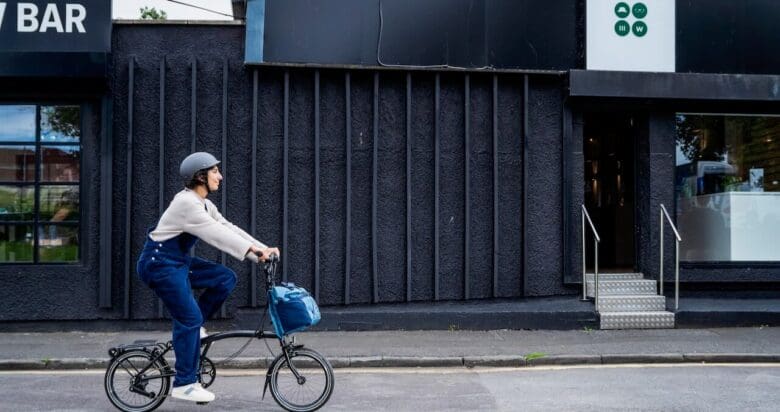
But, the problem with owning a regular bicycle introduces it’s own list of pain-points. You might live in a condo and have to descend to parking level P5 where your bike is stashed. That sounds like misery! You might have lost a few bikes to theft while at work. Also misery! And, you may have had a bike that wasn’t really designed for city riding, something hunched-over with too many speeds and too many visits to the bike shop. A good folding bike ends this misery! A folding is the only bike that you can whisk past the condo concierge, the only bike you can bring inside to work, and, incidentally, the only bike you are allowed to use at rush-hour on transit.
If a folding bike answers a lot of questions, the best answer might be a folding bikes answer to theft. Here’s a bike that never needs to be parked in a parking garage, a bike that fits so easily in a cupboard and a bike that you can take to work and easily stash under your desk. And it’s not just your desk you can stash it under. We’ve coat checked our Brompton’s at the AGO – even at the Louvre! – and we’ll take ours into restaurants, the library, our local climbing gym, and etc.. Once it’s folded it follows you. You can’t do that with a large-wheeled bike.
 The Ride
The Ride
What surprises many people when trying a folding bike is the ride. It’s not what you’d expect! We’ve watched customers turn over in their minds what they think the bike will feel like only to test ride the bike and find out how happily wrong they were. We’ve watched customers angle towards Brompton solely because of its small folded size and ease of fold, and then taking a test ride only to find out how totally fun it is. What is it about a folding bike that rides well? Well, that has to do with its wheels.
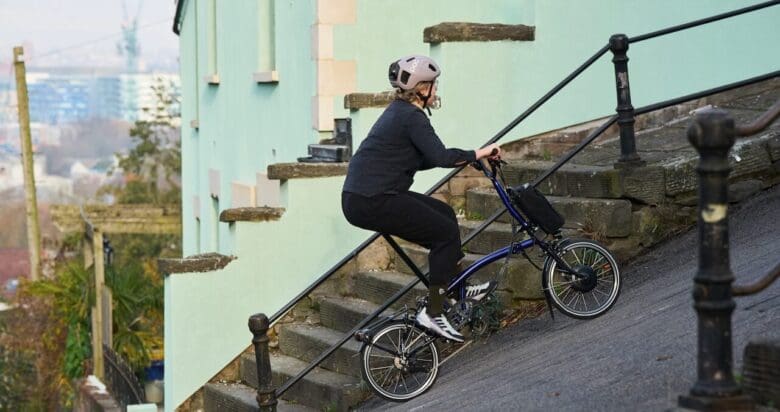
The natural advantage that a small wheel has is its instant acceleration and intuitive, proactive handling. The problem with a larger wheel is that in order to be efficient, you need to accelerate to top speed and then maintain this speed. Well, good luck doing that in the city. In the city a rider essentially accelerates from stoplight to stoplight, without ever reaching (let alone maintaining) top speed. The truth is, these larger wheels reflect a bias within the bike industry. If bike designers were less interested in racing and more interested in bikes-as-transportation, we’d see a lot more bikes with smaller wheels. A small wheel flourishes where distances are shorter, stop-and-starts are the norm, and the path to each journey is zig-zaggy rather than point-and-shoot.
The Recreational Rider
But, is a larger wheel really more efficient than a smaller wheel? The jury is still out. Alex Moulton, who invented the collapsible Moulton bikes, proved on paper that his 17″ wheeled bikes are just as efficient as a modern racing bike – and his bike still holds the land speed record. (Which has frustrated mainstream bike designers since!). At Pedaal, we sell Brompton, and its high pressure tire and wide range of gears offer the same capacity as a regular bike. But, unlike a regular bike which requires great expense to transport, a folding bike packs away easily which makes it a great bike to take travelling. You only need to visit our friends Heather and Pier’s Bromptoning Blog to see all the adventures you too could have. If there’s one thing we specifically love about Brompton, it’s that a Brompton is not only a key to the city, but also a key to travel and adventure. In fact, this is what separates a Brompton from other folding bikes. For, most other folding bikes on the market weren’t designed for the city, but rather only for recreation.

An example of these recreational bikes are the brands Dahon and Tern. Dahon was started by David Hon in 1982, six years after Brompton (who started in 1976). Tern was started by Florence Hon after a divorce settlement and is, apart from branding a fairly similar bike to Dahon. But, if a Brompton is a product of London, Dahon and Tern bikes are very much a product of Los Angeles. And the two cities couldn’t be more different. In terms of use-case, if a Brompton was designed to be your car, a Dahon was designed to fit in a car. Of course, a Brompton fits even better in a car than a Dahon, but the point is: it does much more than that too.
The Math
Earlier we mentioned that a folding bike should minimally ride well, fold and unfold easily, and transport easily when folded. If there is a mathematics to this, it means that the bike should fold as small as possible and unfold as big as possible. By “big” we mean that the bike should have a big footprint, or wheelbase. Bikes with short wheelbases are nervous and jumpy, and this becomes more pronounced when the wheels are small. In fact, the natural acceleration and maneuverability of a small wheel are only assets if and only if the wheelbase is long.
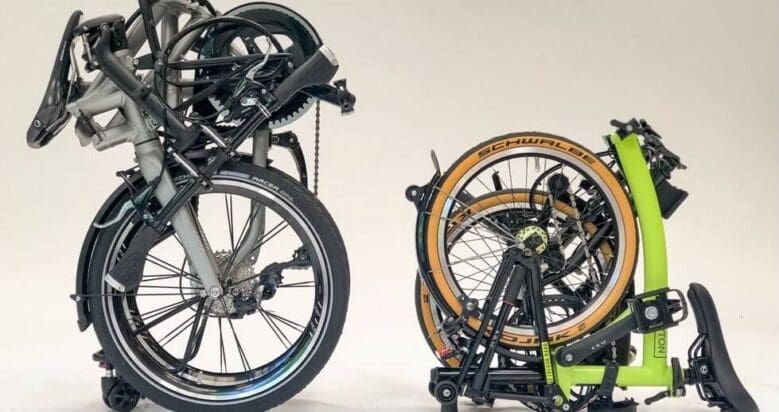
The difference between a Brompton and Dahon lies in the math. When folded, a Brompton is a mere 3.1 cubic feet while most Dahons or Terns are around and above six cubic feet. Yet, despite folding significantly smaller, a Brompton also unfolds to a much longer and better riding bike. The wheelbase on a Dahon is generally around 1025mm, whereas the wheelbase on a Brompton is 1045mm, meaning that despite it’s small wheels it has the same footprint of most regular bikes! This is why a Dahon or Tern often feels quite nervous and fidgety when riding. The feeling is often that one has to continually steer the bike in a straight line and that the handling is more reactive than proactive.
With a Brompton the bike tracks straight and the handling is intuitive and proactive; far less sloppy than a bigger wheeled bike. Meanwhile, when each bike is folded, the Brompton is significantly smaller. What other bike can fit into the overhead of an airliner? Not a Dahon!

The Performance Rider
There is a third type of folding bike rider and that is the performance cyclist. You might say this cyclist is often trying to beat the clock or is, conversely, clocking major distances. While folding bikes won’t exactly be found in the Tour De France, they can be raced, and every year Brompton hosts the Brompton World Championships, which, while tongue-and-cheek (you have to dress in formal wear while racing) is taken quite seriously by the participants. In fact, Brompton’s are so speedy that they collaborated with David Millar, the British National Road champion. This bike is called the CHPT3 and features high pressure tires and aggressive racing position.
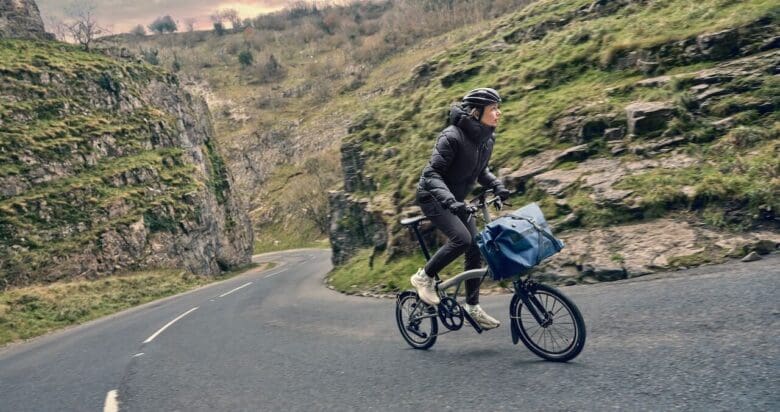
But the most common performance cyclist using a folding bike is the endurance rider, or cycle tourist. As flights have become cheaper over time (while baggage fees increase), the folding bike has become a ticket to frictionless adventure; both in terms of cost and ease. This is where brands like Dahon and Tern fall short. Bike touring is all about carrying quite a bit of gear, and the more gear there is, the more this weight needs to be displaced over a bigger footprint. Dahons and Terns generally don’t have the required wheelbase for touring.
Brands that developed as an answer to the touring cyclist are Moulton and Bike Friday. Both companies make a bike that either folds or collapses for easy airline transit. These are bikes with long wheelbases and high-end parts designed for multi-day or multi-year adventures. But, while each bike has long wheelbases and a small collapsible size, neither bike is especially fast to fold or unfold. Assembly of the Moulton generally takes about 5 minutes. Perfect for unpacking at an airport but quite a hassle if you’re dashing into a coffee shop on the way to work, or, for that matter, taking your bike into work.
It is here also that Brompton excels. People have travelled around the entire world on Brompton’s. Just check out Heinz Stucke who rode 60,000km on his Brompton. Sure, a Brompton can take you to work, but if you wanted to, you could also just keep riding!
Conclusion
As we’ve seen, the folding bike began with a stringent set of expectations as a practical city bike and evolved from there to a recreational and performance platforms. As a Brompton retailer, the question we’ve had to ask is whether there was any actual evolution. As we’ve seen, brand like Dahon or Tern have produced great recreational bikes but lack the capacity for city cycling or longer-distance travels. Likewise, as performance folding bikes developed a lot of practical utility was stripped out. A Brompton’s original design may have been city cycling, but the template of this design also makes it perfect for recreational and performance cycling. This broad use-case is why we are convinced that Brompton is the only bike anyone would ever need. And, it’s so well made that it’s the last bike you’ll ever buy.
We hope that helps and invite you to check current inventory at our temporary transactional website. If you have any questions, please don’t hesitate to email eric@pedaal.com

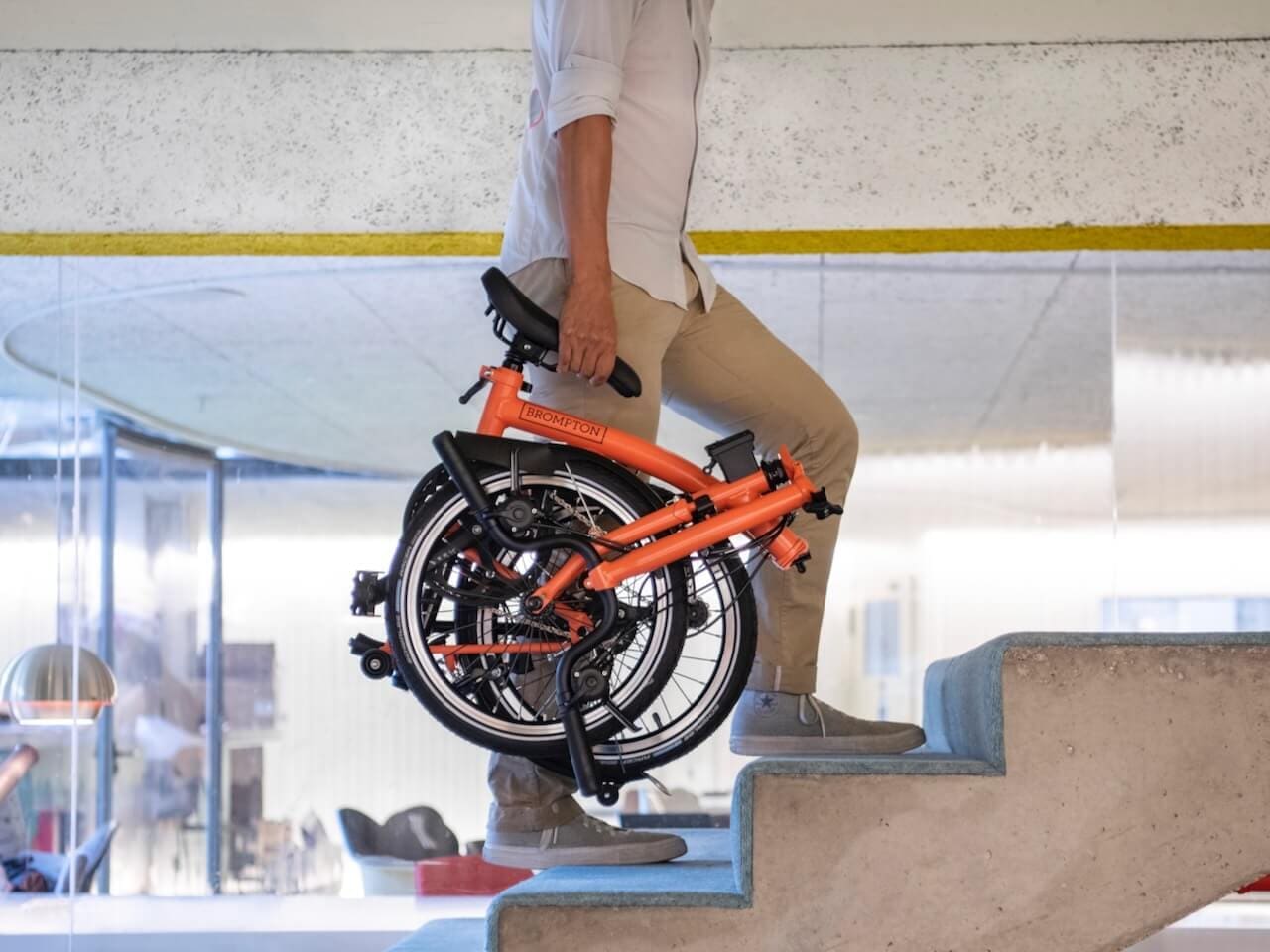
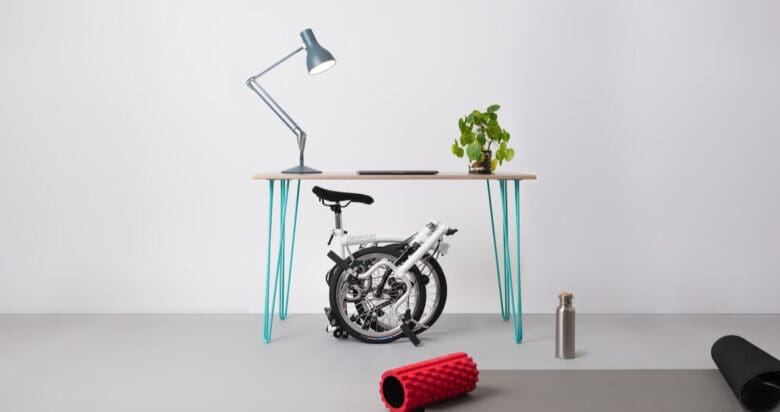 The Ride
The Ride